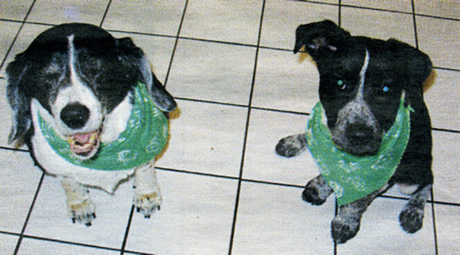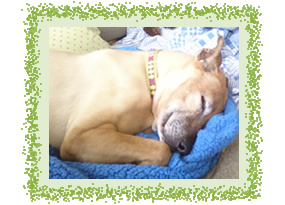Ladue News, September 7, 2007
By Trish Muyco-Tobin
As the ‘mother’ of two dogs, I understand when other dog owners proclaim theirs to be the cutest, sweetest around—that’s because mine are. But we dog owners also know that our four-legged ‘kids’ don’t always behave when they’re suppose to. “You have to remember that dogs are stuck in a perpetual toddler state,” says Sue Schulze, head trainer and behavior counselor at Kennelwood Pet Resorts. “Once you train a dog to learn something, usually they learn fast, but some dogs don’t and they constantly test you.”
Schulze explains that often a dog’s behavioral problem is the fault of both owner and pet. “There’s a miscommunication,” she says. “People treat dogs like little people, while dogs treat people like big dogs.” For example, Schulze says when humans greet each other, they are face to face and usually shake hands. But for dogs, it’s a different story. “When a dog greets another dog, he comes up from the side and makes no eye contact,” she says. “When we greet dogs, we’re actually invading their personal space.”
Schulze says what humans consider to be behavioral problems such as digging, chewing and aggression are natural dog behaviors in the wild. “If they race to the door when someone’s there, that’s their territorial and prey drive at work,” she explains. “They bark because they see the humans ‘barking’ as well—yelling at the dogs to stay put, screaming for someone to get the door, jumping up from the couch—dogs copy that behavior.”
Schulze says one way to deal with bad door manners is to have a plan of what you want the dog to do—like sit or stay—when the doorbell rings; don’t try to figure out how you want them to behave when you’re already heading for the door. “If you control some basic rules that give them structure and let them know you’re in charge, it’ll be easier,” she says. Feeding pets on a schedule is a good way to establish routine. “You, the top dog, control the food. The top dog gets to eat first. You make them sit and wait,” she says. “You also control boundaries, like your bed. It’s the ‘top den,’ and only you can sleep on it.”
In additional to creating a routine for your pet, it’s also important to reinforce good behavior and not to reward bad behavior. “The key in animal training is to make sure that whatever you want your pet to do is rewarding and pleasurable for them,” says Tammy Tvetene, president of Critter Sitters. “There’s no other reason for an animal to do something unless there’s a benefit or a payoff.” But Tvetene notes that many times, pet owners unintentionally reward bad behavior. “If you have a dog who jumps on people when they come into the house, the person unintentionally rewards the dog by petting it,” she explains. “The dog now thinks jumping is what he needs to do to get attention. It all goes back to if they experience something good, they’ll repeat it.”
Another common problem usually perpetuated by owners is leash tugging. “When they see another dog or a bunny, you’re just getting them worked up by saying, ‘Oh, look at the bunny!’ Or, ‘rewarding’ them by taking them to the spot they’re trying to get to,” Tvetene says. “Most dogs are eager to please, you just have to let them know what’s expected of them.”
Letting dogs know what’s expected is easier said than done, but it’s nowhere near impossible. “The hardest part of my job is training the people, the easiest is training the dogs,” says Megan Atkinson, a certified pet dog trainer with Mutt Management. “Unfortunately, most problems are all about the owners—if they’re not committed to practicing and making the effort, there’s really not a whole lot I can do.”
Understanding how dogs learn is a good first step, Atkinson says. “Dogs will do what works—all living beings do. They do things that feel good and don’t do things that feel bad,” she says. Pet owners shouldn’t have unrealistic expectations. “When they take home a new pet, they just assume it’s going to be good,” Atkinson says. “You actually need to work at it—some dogs act up just because they’re not getting enough exercise.”
It all comes down to commitment and patience. “It’s going to take some communication and education for the humans,” Atkinson says. “What you think is ‘problem behavior’ might be normal dog behavior. They’re not being bad, they’re just being dogs.








